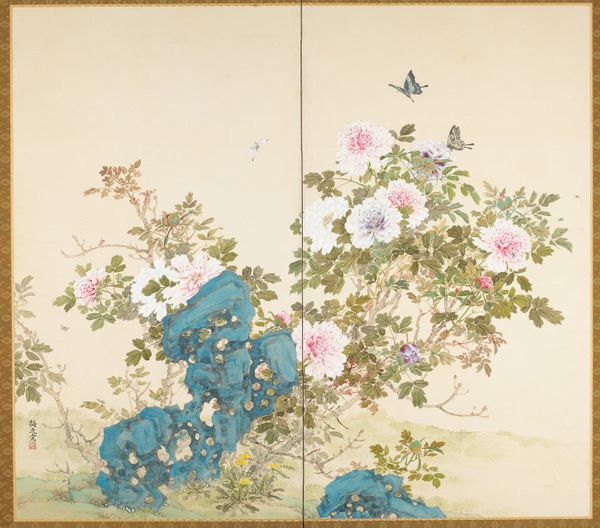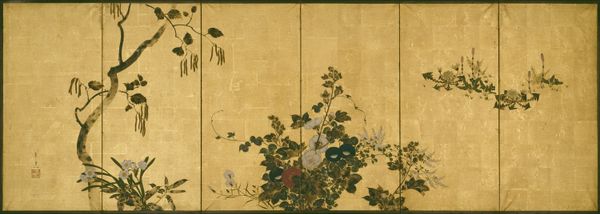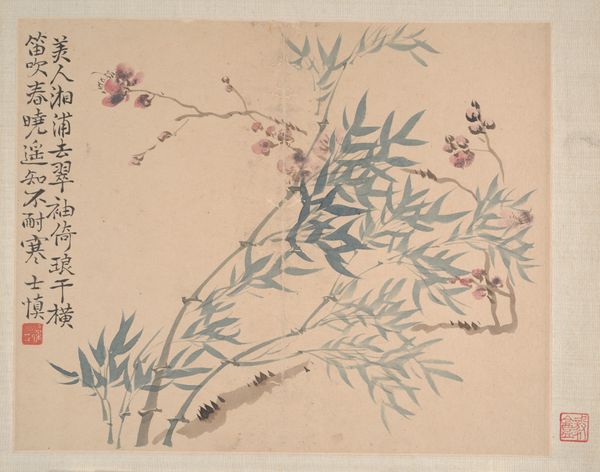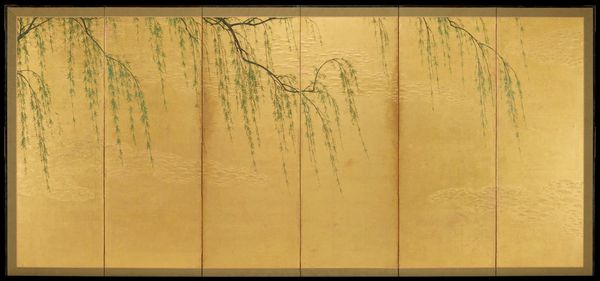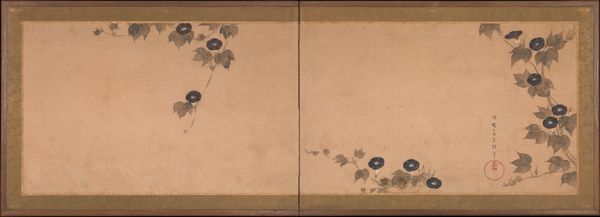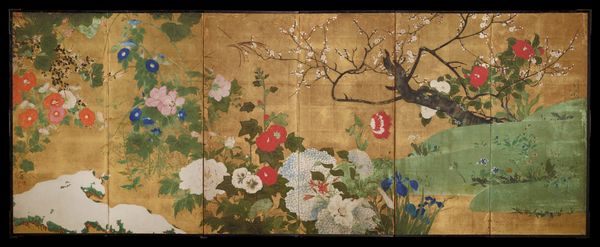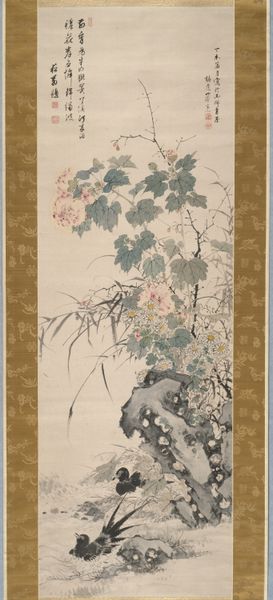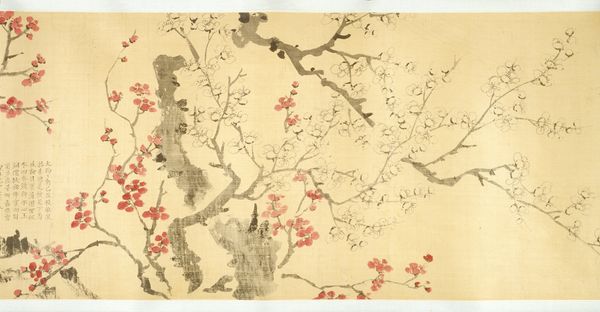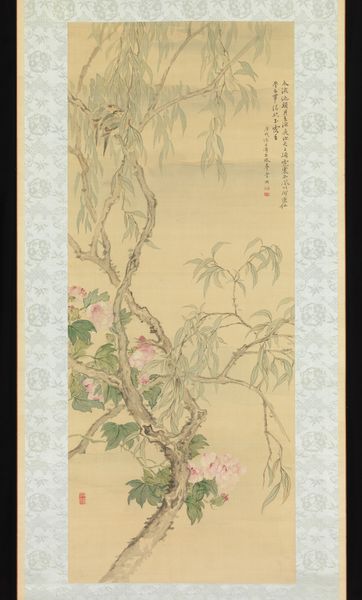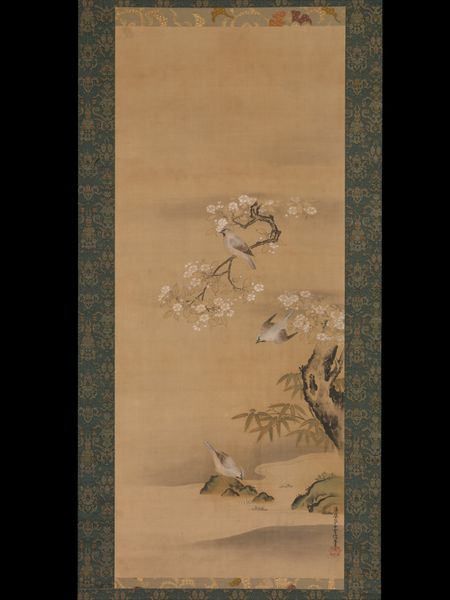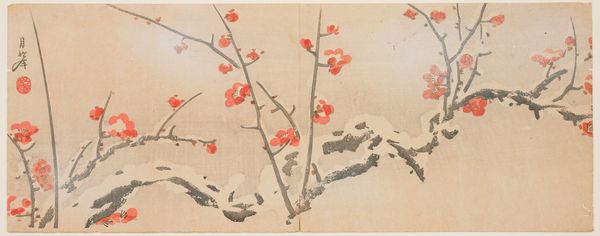![Fall [right of a pair of Flowers and Insects of Spring and Fall] by Yamamoto Baiitsu](/_next/image?url=https%3A%2F%2Fd2w8kbdekdi1gv.cloudfront.net%2FeyJidWNrZXQiOiAiYXJ0ZXJhLWltYWdlcy1idWNrZXQiLCAia2V5IjogImFydHdvcmtzLzQ3MmNlMTY2LTRhMTEtNDUzMy1iMWFhLWEyNzA1YTJlODQzZC80NzJjZTE2Ni00YTExLTQ1MzMtYjFhYS1hMjcwNWEyZTg0M2RfZnVsbC5qcGciLCAiZWRpdHMiOiB7InJlc2l6ZSI6IHsid2lkdGgiOiAxOTIwLCAiaGVpZ2h0IjogMTkyMCwgImZpdCI6ICJpbnNpZGUifX19&w=3840&q=75)
Fall [right of a pair of Flowers and Insects of Spring and Fall] c. mid 19th century
0:00
0:00
painting, paper, watercolor, ink
#
painting
#
asian-art
#
landscape
#
ukiyo-e
#
japan
#
paper
#
watercolor
#
ink
#
botanical art
#
watercolor
Dimensions: 60 3/8 x 68 7/16 in. (153.35 x 173.83 cm) (image)67 1/16 x 75 3/16 in. (170.34 x 190.98 cm)
Copyright: Public Domain
Editor: So, here we have “Fall [right of a pair of Flowers and Insects of Spring and Fall]” by Yamamoto Baiitsu, circa mid 19th century, ink and watercolor on paper. It's really delicate; the colors feel very muted. What do you make of the symbols presented in this Japanese artwork? Curator: Muted, yes, but the apparent gentleness belies a rich layering of coded meaning. Notice the prominence of the chrysanthemum, rendered here in whites and yellows, pushing from and overgrowing the blues of rock. Editor: The chrysanthemum stands out immediately! It is hard to miss the vibrant colors that diverge from the rocks in the lower half of the piece. Curator: Precisely. In East Asian cultures, the chrysanthemum signifies autumn, but also rejuvenation, longevity, and nobility. Emperors often embraced this symbol in artwork, to legitimize power and convey cultural status. The chrysanthemum and rock, each imbued with symbolism, may seem innocuous at first, but represent powerful elements within the ruling class structure. Is that sense of contained power unexpected? Editor: I can see that... it’s almost a bit hidden, a silent visual language! So what about that striking rocky structure that is contrasting and supporting this Chrysanthemum display? Curator: The rocks serve to strengthen this messaging; stones, seemingly permanent and enduring, echo a desire for continuity, resilience, and the fortitude required for leadership and the desire to rule. Taken together, Baiitsu paints a picture not just of the season, but of sustained imperial might, presented discreetly. This artwork speaks to us about cycles and status and what stays over time. Editor: That’s a different way of looking at it. The more that is said, the more this artwork departs from merely nature and autumn, as well as the art of seeing. Curator: Exactly! And do note that on close viewing you begin to enter into dialogue with the history, memory, and meanings loaded within these natural forms.
Comments
minneapolisinstituteofart almost 2 years ago
⋮
A renowned scholar-painter in 19th century Japan, Yamamoto Baiitsu used the difficult "boneless" technique of applying pigment directly to the paper, without outlines, as a way to impart a palpable delicacy to leaves and petals. As demonstrated in these screens, he also was skilled at capturing nature's complicated profusion of vegetation. Unlike his predecessors, who had little firsthand knowledge of Chinese painting styles, Baiitsu had direct access to Ming dynasty bird-and-flower paintings, imported through the port at Nagasaki. Here, he acknowledged his debt to China by rendering the garden rocks in their blue-green manner.
Join the conversation
Join millions of artists and users on Artera today and experience the ultimate creative platform.
